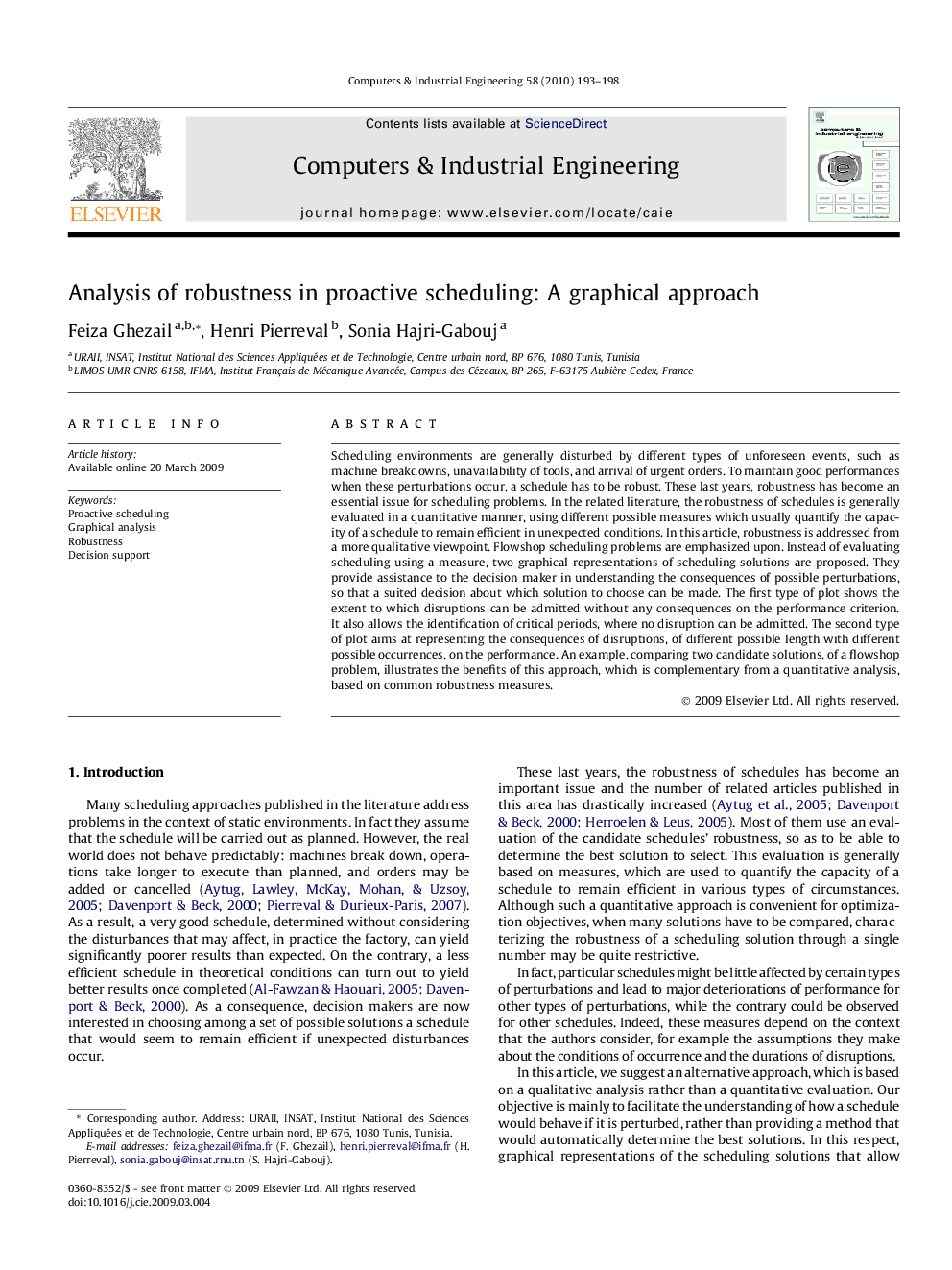| کد مقاله | کد نشریه | سال انتشار | مقاله انگلیسی | نسخه تمام متن |
|---|---|---|---|---|
| 1134385 | 956066 | 2010 | 6 صفحه PDF | دانلود رایگان |

Scheduling environments are generally disturbed by different types of unforeseen events, such as machine breakdowns, unavailability of tools, and arrival of urgent orders. To maintain good performances when these perturbations occur, a schedule has to be robust. These last years, robustness has become an essential issue for scheduling problems. In the related literature, the robustness of schedules is generally evaluated in a quantitative manner, using different possible measures which usually quantify the capacity of a schedule to remain efficient in unexpected conditions. In this article, robustness is addressed from a more qualitative viewpoint. Flowshop scheduling problems are emphasized upon. Instead of evaluating scheduling using a measure, two graphical representations of scheduling solutions are proposed. They provide assistance to the decision maker in understanding the consequences of possible perturbations, so that a suited decision about which solution to choose can be made. The first type of plot shows the extent to which disruptions can be admitted without any consequences on the performance criterion. It also allows the identification of critical periods, where no disruption can be admitted. The second type of plot aims at representing the consequences of disruptions, of different possible length with different possible occurrences, on the performance. An example, comparing two candidate solutions, of a flowshop problem, illustrates the benefits of this approach, which is complementary from a quantitative analysis, based on common robustness measures.
Journal: Computers & Industrial Engineering - Volume 58, Issue 2, March 2010, Pages 193–198